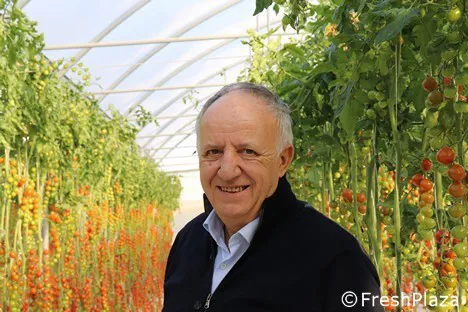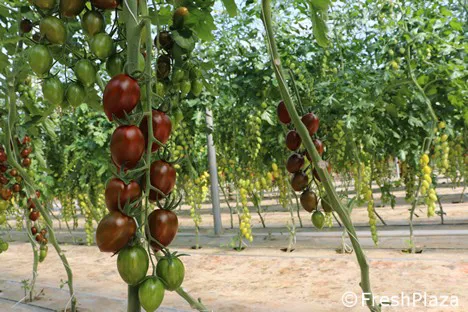"All greenhouse crops suffered from the high temperatures in November and December 2022. Even now, they are still feeling the effects of that abnormal heat. The plants are stressed, especially tomato plants," said Massimo Pavan, a long-time entrepreneur who divides his time between Sicily and the northern Italian Veneto.
 Massimo Pavan
Massimo Pavan
In the two months Pavan is referring to, tomato production spiked significantly, throwing the market out of balance. Dragging down all segments were the midi plums, which were the first to suffer from the great heat. Moreover, encouraged by the good results of the past two years, many growers chose to plant this type of tomato. In doing so, they did not take into account the possible consequences of overproduction. Very low prices and a lot of unsold product in early winter was the result.
"The situation of cherry tomatoes was different. Like all other tomatoes, that segment also suffered from the heat in those weeks, but the prices were still slightly better, about €0.40/0.50 cents per kilo. A turnaround came in mid-January. The limited supply caused prices to rise above €3.00 per kilo. Furthermore, humidity in the greenhouses in November and December fueled botrytis, putting further pressure on yields. Even now, growers are still receiving €2.50 per kilogram for cherry tomatoes, although a decline is gradually setting in. The impact of ToBRFV, which growers have since learned to live with, is less significant. After all, breeders are also already starting to market the first varieties with average resistance."
This season, the cherry tomato is doing better than the cherry plum tomato, as this type of tomato is also present in large quantities on the market.
"Our Spanish colleagues seem to have faced the same problems in the greenhouse and on the market. Morocco's case is different, mainly due to the government's ban on tomato exports to reduce prices on the domestic market. It was a decision to slow down supplies to Europe. The measure was then temporarily suspended but was almost immediately restored. Turkey also did the same, but only from 2 to 8 March, because such a measure threatened the reliability of exporters on the international market. Turkey's interruption did allow us to send more Sicilian tomatoes to Poland and other Eastern European countries during that period."

The reason behind the Turkish government's decision to maintain the ban until 14 April was to ensure adequate domestic supplies and stabilize prices after the devastating earthquakes in the country's southeast. But the ban provoked a reaction from the tomato sector, which depends on exports for its survival. The sector has shown that its tomato crop (520,000 tons by 2022) is more than enough to meet both domestic and foreign demand, stressing that any disruption to exports would have caused enormous economic damage to the sector.
Thus, the supply of Sicilian product to Eastern European countries immediately suffered another setback.
